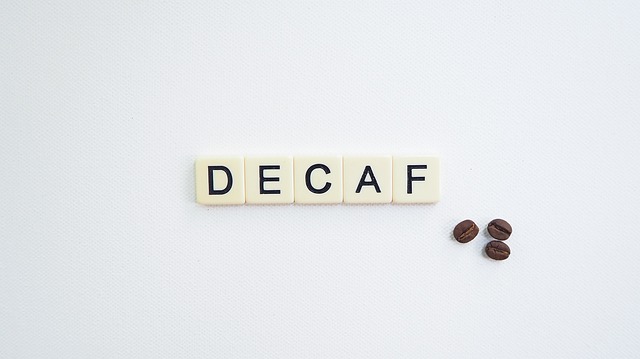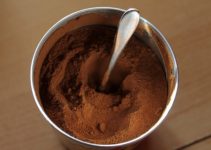
Best decaf coffee consumer reports in 2022
Coffee is a drink enjoyed by people all over the world. It’s a morning ritual for some, and a midday pick-me-up for others. But what happens when you can’t have caffeine? Fear not, decaf coffee drinkers, because Consumer Reports has your back. In this article, we’ll be taking a look at the best decaf coffee consumer reports brands according to Consumer Reports’ ratings. So whether you’re looking for something new to try or just want to stick with your tried and true favorite, we’ve got you covered. Keep reading to learn more!
Best decaf coffee consumer reports on the market. The results are informative and helpful for those who want to buy decaffeinated coffee without sacrificing flavor or quality. When it comes to buying a cup of joe, many people choose not to consume caffeine due to health concerns, dietary restrictions, or other personal reasons. Luckily there is no shortage of options when you’re looking for a delicious cup of decaf coffee! To help make your next purchase easier, we’ve compiled our own list based off input from experts in food science as well as feedback from consumers just like you.
Table of Contents
About Decaf Coffee
Decaf is coffee that has most, if not all, of its caffeine content removed. It may also be called “decaffeinated” coffee.
Decaf is usually made from the same beans as regular coffee; decaf has just had most (if not all) of the caffeine removed. The reason to drink it could vary between those who want to cut down on their caffeine intake or those who can’t enjoy other types of coffee due to medication they’re taking. Decaf may sometimes taste like watered-down regular coffee and isn’t as flavorful as other types, but there are ways you can improve upon this: using a good blend and proper brewing methods. These two factors will ensure that your decaf won’t feel or taste like something you’re not enjoying.
Decaf may be made from the same beans as regular coffee but with caffeine removed through a number of procedures that can include “water or steam processes, organic solvent processes, activated charcoal processes and carbon dioxide processes. The latter process is also known as Swiss Water Process and it’s this one most often used in coffee decaffeination today since it doesn’t involve a chemical solvent.[3] It works by letting the green (unroasted) coffee beans soak up water to which caffeine has been added; once this happens, the bean is separated from the caffeine-containing solution using carbon dioxide. This method “has not only proven to be gentle on the flavor of the beans” because there are no chemical solvents involved, but it also preserves most of the beans’ flavor.
As mentioned, decaf may taste like watered-down coffee because it doesn’t have caffeine to give it that extra “oomph” some people are looking for. However, there are ways you can prepare your decaf so that you’ll enjoy it just as much as regular coffee. The first has to do with the grind. Decaf needs a finer grind than regular coffee since its oils are more soluble in water. That being said, any method of brewing will work with these grounds; however, use of an espresso maker or press pot will produce better results. You can either buy pre-ground decaf beans or grind them yourself – up to you.
Not only will the grind improve the taste, but so will the blend of decaf. For starters, avoid using a dark roast; this type of coffee usually has more caffeine in it and it won’t be great for making your decaf. Keep in mind that “most people will still get some of the benefits from drinking dark-roast coffee because there are compounds independent of caffeine that have health benefits. Light roasts will result in better tasting decaf, though darker ones are okay every once in a while. Beans with fruity or acidic flavors should also be avoided since these kinds don’t mix well with decaf.
Lastly, always remember to keep your beans fresh whenever possible by storing them properly.
As with any type of coffee, decaf beans should be fresh to get the best taste possible. Just because there’s no caffeine doesn’t mean you should buy old beans; these still lose flavor over time like regular coffee does. Brewing methods will also affect what your decaf tastes like – always remember that! This means that if you’re not satisfied with how it turned out (or didn’t), experiment with different ones next time.
Finally… make sure you do actually want decaf instead of just settling for less. Decaf isn’t as flavorful, flavorful and some people may not enjoy the taste or experience any laxative effects from drinking it; others can drink regular coffee without experiencing too many issues.
Just because you’re looking to cut back on caffeine doesn’t mean you have to cut back on it altogether. Try out decaf and see what you think of it!
Benefits Of Decaf Coffee
Much like regular coffee beans, decaf is loaded with caffeine and other health benefits. Decaffeinated coffee does not offer the same weight loss results as its caffeinated counterpart, but it does have a number of health advantages which can help to improve your life in many different ways.
Decaf Coffee Lowers The Risk Of Type II Diabetes
One study found that people who drink decaf coffee every day were significantly less likely to develop type II diabetes. The caffeine in regular coffee can trigger your body’s release of adrenaline, which in turn elevates your blood sugar levels. Over time, these elevated levels can lead to insulin resistance or diabetes. However, the nutrients and antioxidants in decaf coffee can help your body to lower your blood sugar naturally, which is good news for diabetics.
A study from Cornell found that people who drink decaf coffee lowered their blood pressure levels by 5%. This reduction was attributed to the antioxidants in the beans, which make it easier for your arteries to open up and relax. Coffee has been shown to have a number of additional cardiovascular benefits as well, including reducing your cholesterol levels and triglyceride levels.
The best decaf coffee consumer reports may reduce your risk of cancer
Another study conducted at the University of Southern California found that men who drink decaf coffee reduce their risk of developing prostate cancer by 20%. One explanation for this is because the polyphenols in decaf coffee can promote apoptosis (programmed cell death) which makes it more difficult for cancer cells to spread throughout the body. Additionally, coffee has been shown to protect against liver, colorectal, breast and oral cancers. The evidence is stronger with caffeinated coffee than it is with decaf, but drinking either type will give you some level of protection against certain types of cancer.
Things To Avoid
While a best decaf coffee consumer reports is healthy, there are a few things you should avoid to make sure your experience is as beneficial as it can be:
– Don’t add sugar or artificial sweeteners…Since decaf beans don’t hold back on flavor, these additives will cancel out the health benefits of the coffee and leave you with an unhealthy drink.
– Don’t use caffeinated creamer…Adding this to your cup of decaf will still give you a jolt from the caffeine.
– Steer clear of creamers with trans fats..This type of fat has been shown to raise LDL cholesterol levels and increase inflammation.
What are some Common Methods to Decaffeinate Coffee Beans?
Perhaps you are a coffee lover who has been trying to keep your caffeine intake low. Maybe you’re suffering from insomnia, or perhaps you have health issues that require you to stay away from too much caffeine. Whatever your reasons are for wanting to decaffeinate coffee beans, there are several methods that can be used.
– Swirling Warm Water
A simple way of decaffeinating your coffee is to soak the beans in warm water for about 15 minutes. You can use a container that has a wide opening, such as a cooking pot or dishpan, and fill it with water. Let it heat up to around 100 degrees Fahrenheit (38 Celsius). Then pour some of the heated water over the beans and let them sit for about five minutes. Repeat this step until the time has gone up to 15 minutes. This method removes about 97 percent of the caffeine from your coffee beans. However, you will be left with very weak-tasting coffee because most of its flavor compounds are also removed during this process.
– The Swiss Water Process
This involves steeping coarsely ground coffee in hot water for about 20 minutes. Then the beans are removed, and the water is passed through activated charcoal. The decaffeinated liquid passes through more charcoal to remove any extra caffeine, and then it’s ready to be used as regular coffee again. Using this method only removes 97 percent of the caffeine from your beans; however, you can expect more flavor retention than with the swirling water method because it uses careful processing that doesn’t involve harsh chemicals or solvents like ethyl acetate or dichloromethane.
– The Ethyl Acetate Process
This process is similar to the Swiss Water Method except it uses ethyl acetate (a chemical compound related to vinegar) instead of water. Normally, ethyl acetate is used to remove caffeine from coffee beans. It’s considered safe by the FDA, but drinking too much of it can be harmful because it’s known for damaging your nervous system. If you want to decaffeinate coffee with this method, you’ll need to buy ethyl acetate extractor capsules that are widely available online at sites like Amazon.
– Supercritical Carbon Dioxide
This process makes use of carbon dioxide that’s been compressed into a supercritical state (that is, where it creates its own internal pressure), which allows it to act as both a liquid and gas. When it comes in contact with the beans, the carbon dioxide enters the porous structure of the bean and extracts caffeine; afterwards, it releases the pressure and turns into a gas before evaporating. This method is considered by many to be the best choice for decaffeinating coffee beans because it’s extremely effective, doesn’t leave any residue or chemical compounds in your beans, and allows you to retain more flavor than other methods because it uses pressurized liquid carbon dioxide instead of harsh chemicals like ethyl acetate.
– Solvent Extraction
This process involves soaking roasted coffee beans in an organic solvent (such as dichloromethane) that meets the FDA’s food safety guidelines. The caffeine will dissolve into the solvent, which is then separated from both solvent and caffeine using distillation processes. However, there are concerns about using this method since some studies show that dichloromethane may have harmful long-term effects on human health.
– Carbon Dioxide Extraction
Carbon dioxide extraction is similar to supercritical carbon dioxide extraction because it can extract caffeine without using harsh chemicals. Instead, it uses pressurized liquid carbon dioxide that’s combined with water, and this mixture dissolves the caffeine before evaporating the solvent away. This process is generally considered safe for humans (though like other methods, you should avoid drinking too much of it), but there are concerns about how effective it really is in comparison to other processes since it doesn’t use high-pressure carbon dioxide. The resulting coffee tastes good but might not be as flavorful as traditionally decaffeinated coffee beans.
As mentioned above, there are many different methods you can use to decaffeinate coffee beans, but the method you ultimately choose will depend on your preferences. For instance, if you want decaf that tastes similar to regular coffee, then you’ll need to remove caffeine with ethyl acetate or another chemical solvent. However, it’s best to avoid using this method because there are concerns about its safety. If you prefer a natural process for decaffeinating coffee beans, then carbon dioxide extraction is definitely the way to go since carbon dioxide is widely recognized as safe for human consumption.
FAQs About Best Decaf Coffee Consumer Reports
Why Are Some Decaf Coffees So Bitter?
The best decaf coffee consumer reports has among the most concentrated caffeine of any product sold in stores. When caffeine is extracted from the beans, this leaves behind many other compounds that are bitter or unpleasant tasting. This can leave a stale, flat taste which is described as being “decaffeinated”. Unfortunately, there isn’t much you can do about this problem. However, while naturally processed decaf coffees tend to be more acidic and therefore have a stronger flavor, they also tend to have less bitterness because the acidity masks it. Therefore, naturally processed decaf coffees may not be quite as bad. The best thing to do when drinking decaf is drink it black – with no cream or sugar. This will highlight the most unpleasant flavors in the coffee and allow you to identify them easily.
What Is Swiss Water Process?
The Swiss water process involves removing caffeine from green coffee beans using only pure water. There are no chemicals involved in this process, which makes it very different from other decaffeination processes that involve the use of solvents such as methylene chloride, ethyl acetate, or even plain old CO2. The Swiss water decaffeination process was developed in Switzerland by a chemist working for Nestle (which still owns the patent). It uses “counter-current extraction” where water saturated with caffeine flows through a bed of coffee beans while pure hot water is circulated throughout. The caffeine and other soluble substances diffuse into the pure water. At first, this process was used to decaffeinate coffee and tea exclusively. However, after the World Health Organization (WHO) classified all methylene chloride products as hazardous to human health, Swiss Water Process has been used on a wider variety of products such as herbal teas and cocoa beans . The decaf products still must go through some form of roasting process which makes Swiss Water Process Decaf somewhat less desirable as it also strips much of the flavor out of the beans.
What is Organic Coffee? Does This Mean That No Chemicals Were Used In Processing?
There are different definitions for what ‘organic’ means. In terms of foodstuffs, the most common definition is that the product should be at least 95% organic. However, many decaf coffees are 100% organic, but do not use the ‘organic’ label because to qualify for this label, a foodstuff must contain at least 70% organic ingredients. In other words, if there is only one ingredient (coffee) which is not an herb or legume (which includes coffee beans), then it doesn’t qualify as “100% Organic.”
Where Can I Purchase Good Tasting Decaffeinated Coffee?
Unfortunately, all decaffeinated products tend to taste somewhat flat or bland when compared with regular caffeinated versions of the same product. If you want good tasting decaf coffee, you will need to purchase a naturally processed decaf. Swiss water process and CO2 processing (see infographic) both strip flavor from the beans in addition to removing caffeine, so neither type of decaf will brew a good tasting cup of coffee. The best method for making sure that you are getting quality decafs is to look for “CO2 Decaf” on the label. If the label does not say this, it probably means that it was decaffeinated using chemicals or Swiss Water Process.
Which Country Grows The Best Coffee?
Since different varieties grow well in specific climates, different countries tend to excel at growing certain types of coffees. Colombia grows excellent washed arabica beans which are often used as high-end specialty coffees. Meanwhile, Brazil grows excellent washed arabica and robusta beans. The unique climate of Hawaii allows coffee to grow very well there as well.
I Love The Smell Of Fresh Roasted Coffee, What Is It About This Aroma That Makes Me So Happy?
Caffeine and other substances in coffee beans give off a strong pleasant aroma when they are roasted properly. Coffee lovers often refer to this smell as “the music of angels.” While you can certainly still enjoy high-quality decafs without grinding them yourself, brewing them properly too will ensure that you get the full benefits from their rich aromas. If your decaf doesn’t have much of an aroma, chances are that it was either not freshly roasted or that it was not brewed properly.
>>> See more: How Do They Make Decaf Coffee? | Best decaf coffee consumer reports
Conclusion paragraph: Many people have been looking for the best decaf coffee to purchase, and that search has taken them all over the globe. In this article we’ve compiled a list of best decaf coffee consumer reports with an in-depth look at what they offer you as a consumer. We hope that our research helps you find your perfect cup of joe! Let us know if there are any other questions or comments on these companies; we would love to hear from you!
Read more:


![Best Flatware Consumer Reports [Buying Guide 2022] Best Flatware Consumer Reports [Buying Guide 2022]](https://dogwoodrestaurant.net/wp-content/uploads/2022/02/best-flatware-consumer-reports-211x150.jpg)
